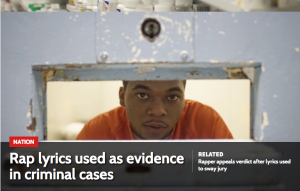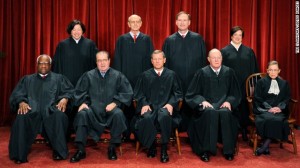Last night, PBS NewsHour ran a segment on a topic I’ve dedicated much of this blog to: the growing use of rap lyrics in criminal trials. I was fortunate enough to be interviewed for the piece, and I’m especially happy to have been involved because of how well it turned out. I knew this story needed to be told visually to come alive, but also by a network that takes journalism seriously. I think the producers at PBS (shout out to William Brangham and Saskia DeMelker) nailed it.
It’s about 10 minutes long, and although there’s always more to say, I think this provides an excellent overview of the issue and a balanced look at differing perspectives. A big thanks to PBS for helping to keep this topic in the spotlight.



